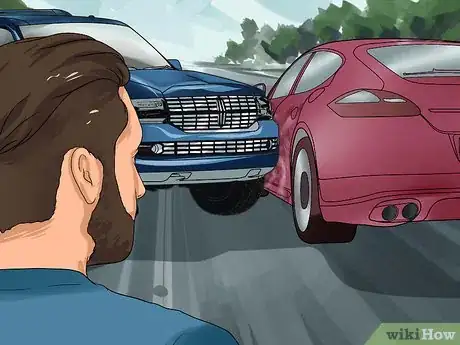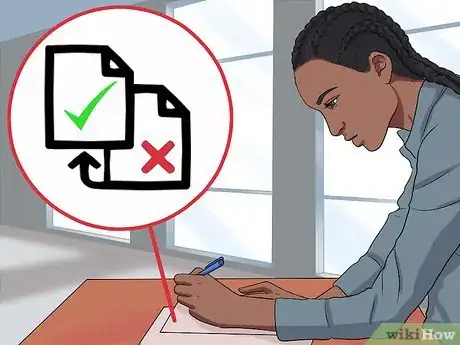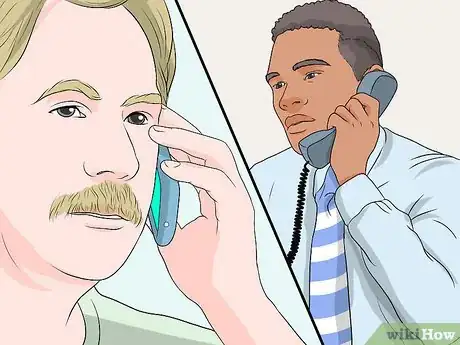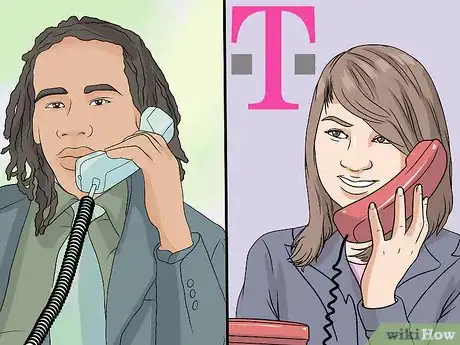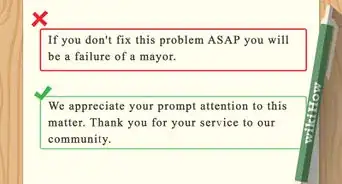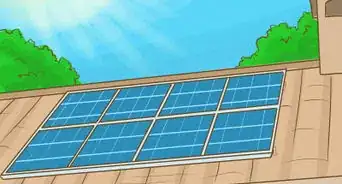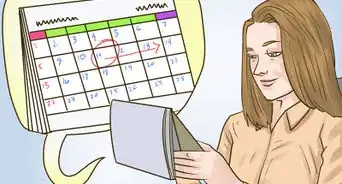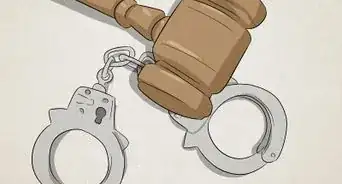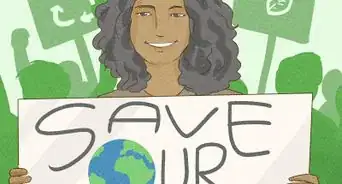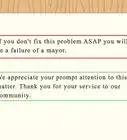This article was co-authored by wikiHow Staff. Our trained team of editors and researchers validate articles for accuracy and comprehensiveness. wikiHow's Content Management Team carefully monitors the work from our editorial staff to ensure that each article is backed by trusted research and meets our high quality standards.
There are 8 references cited in this article, which can be found at the bottom of the page.
This article has been viewed 25,589 times.
Learn more...
You love where you live and hometown pride abounds from every pore of the city. It is possible that there are a few improvements that could greatly improve the function of the town, as well as improve its overall milieu. It’s time to make a difference and do it appropriately and collectively. After all, lots of people would like a new park or a wonderful new library.
Steps
Organizing Your Ideas
-
1Research the issue. You’ll begin by researching to see if a problem is a singular event or a habitual problem. Before you get ahead of yourself and run to the mayor’s office, read your local papers and news to find out if what you want done in your city is already being considered, or better yet, has already been approved. If it is not clear from the local news sources, find out what your local city/town website is. It might contain information on different meetings involving improvements or changes that you want done in your city.
- For example, you can go to city hall and ask if there are road changes planned already for the town square, or if the county library has already decided to build a local branch in your area.
-
2Document the issue. If you notice a problem you should document it. It is helpful to gather as much information as possible so you can adequately address how to remedy it. The information you document can be quite varied, so be sure to include as much as possible. Not only will you have more to work with, you’ll also be better informed.
- Collect information about the time of day something happens, the addresses or locations related to your issue, if there is an accident or incident, statements of the people living in that particular section of the city, how long it has been going on, and anything else you can record. It may be very important to know this for your cause.
- For example, if there is a traffic jam on your street on a regular basis, find out when it starts each day, how long it lasts and where the cars are coming from and going to. Generally you’ll need to know how the issue affects the community.
Advertisement -
3Identify possible causes. Try to find what the cause of the issue is. Perhaps a problem occurs because of previous town planning, red tape, or a lack of funding.
- Another way to find the cause of traffic build-up is to find the source of the build-up. Walk to the end of your street to see if the culprit is a poorly timed traffic light, or go the opposite direction to see if cars are turning down your street because of an event, such as a parade, car accident, or even highway off-ramp construction. Now write down what you observe so you can review your notes later.
- Take it a step further by doing some preliminary research on what configuration is required for a specific intersection based on traffic patterns. For example, you might look up the amount of cars needed to install a four-way stop. You think it is an issue but perhaps the problem is being handled according to policy.
-
4Propose a solution. Identifying a problem is only part of the process. Be sure to propose a viable solution to the problem. Part of this could include visualizing the changes you want and considering how they would impact the community. If there aren’t enough funds to do the work, consider organizing a fundraiser. Here you could put together a car wash that involves the local high school and sports teams, or if you’re looking to put up a structure, try a “buy-a-brick” campaign, where people can buy a brick for $10 each.
- One way to research an issue is to read through the rulemaking process for the U.S. Department of Transportation where you can find information on the finances of making changes to infrastructure, as well as the steps involved in the process and the requirements for change.[1]
-
5Outline your plan. When you have a possible solution, plan a rough outline for how this will impact the community. You should consider the time it will take to make a change to the street, the cost of the change, who will do the work, and how it will affect the lives of community members in the short and long term. For example, would an expensive new traffic light be worth it if your town can’t afford to maintain a fire engine for the next five years?
- If your plan is to propose a change to the street layout, you could investigate the types of traffic flow available, comparing intersections to roundabouts. A simple internet search will reveal plenty of sources for you to use to bolster your plan.[2]
Voicing Your Concerns
-
1Attend city council meetings. Every city has regularly scheduled meetings, so it should be quite easy to find a meeting and attend it. Remember the initial purpose of attending a meeting is to gather information, get a feel for the issues at hand, and learn how the process works. After you’ve gathered more info, you can bring up the issue you want fixed or building you want constructed.
- Anyone can attend a city council meeting but there are likely rules to follow. Any interested party can speak, but you may be limited on how much time you have to talk. In some cases those who wish to speak will have to state their name, address, and why they want to talk. So be prepared to be concise.[3]
- Have a “30 second” version of your issue or topic memorized that includes a brief list of positive outcomes to motivate the crowd and grab their attention. You might say “Hello, my name is John Q. Public, and I believe that adding a branch of the Chickasaw County Public Library to the town of Castle Rock will greatly benefit our community by lowering the rate of recidivism and promoting family togetherness.”
- Also be sure you have a detailed “5 minute” version of your summary that includes a more detailed account of how you plan to bring the library to town. This will show you have thought it through, further showing you are prepared and perhaps garnering support.
-
2Write a petition. Get to know your neighbors and those in the community. Talk with your neighbors and have them sign a petition to show you are in agreement about the issue. Also show you agree on the solution.[4]
- When you begin a petition, be sure to consider how you’re going to write the petition, including who will write it and what wording you want to use. Focus on writing concise arguments that sway people to affect change using statistical or emotional evidence.[5]
- Finally, your petition should be well thought out and well-planned. There are several steps to consider beyond the writing process, including how you will get people to sign, whether or not you want to post your petition online and even involve social media, and how you want to release your results to the world. For example, are you handing over an entire bundle of individually signed papers, or a shorter list of names?
-
3Organize the community. As you move forward, you’ll need to meet with the other interested members of your city to garner support. If you haven’t already begun to interact with the other people in your town, this is a good time to set an informal public meeting and ask how they feel about the heavy traffic on Bleecker Street or about the sad conditions of Lincoln Park.
- To set up a meeting, you can ask to reserve space at your local town center, city hall, a church, or one of the local schools in your area. You will likely have to call a few places to check availability and to see if they allow public gatherings. When you call try being straight and to the point, like “Good evening, I’m calling to ask if I might reserve a space for a small public meeting I am organizing to talk about public park improvements. Is this something I can schedule with you?”
-
4Contact local businesses. Identify local business leaders in your community and bring them up to date on the issue. While some may want to talk about the traffic jam on your block, they may take an interest in cleaning up a park, or demolishing an abandoned house.
- There is the chance that many of the local business owners serve as contributing members on the city council, Better Business Bureau, or other community groups. Getting them involved will prove worthy to the cause as you’ve involved someone with some resources, whether financial or social, who can help you achieve your goals.
- By asking local businesses to help you have also brought more attention to the cause. At the same time you have shown the power of strength in numbers.
-
5Contact the appropriate office. After you’ve assessed, planned, and organized, now you need to tell someone official about the issue, but you cannot just tell anyone or your words may fall on deaf ears. Knowing how your city government is structured is important for every step of this process.[6]
- Be sure to identify a contact point as your local government is divided into several levels of offices occupied by people that were likely elected to the position. This is important because not only do you need to find the right person to approach first (which is likely not the mayor), it is the job of the person you contact to at least listen to their constituency.
- For example, within a city there may be wards or districts that represent smaller parts or neighborhoods, each with its own councilman or alderman elected to represent the people who live there. The next level up is the city council, and about that the deputy mayor, and ultimately the mayor.[7]
- When you initiate contact, use several methods. Try calling to touch base as a first step, then follow-up with a letter via email or surface mail. You can also go in person to make contact. Make sure you are polite and consistent. For example, it is good to say “I’m writing to follow-up to an email I recently sent regarding making renovations to MacArthur Park.”
-
6Know when to contact the mayor. You might think that marching directly to city hall and kicking in the mayor’s door is a good idea, but that doesn't work. City officials and people in general, do not respond well to hot-heads. A better idea is to visit your city’s website and contact the mayor by email. Contact information for city employees is customarily available on the “Contact Us” page of any website.
- Rather than bursting into an office, compose a well-versed and revised letter to the mayor that voices your concerns. You should begin with a polite opening line like “Dear Mayor Wilson,” and continue with a polite introduction that then constructively informs the mayor of your concerns. For example, one might say “My name is John Q. Public and I write to you today about the community’s concerns regarding the traffic light at Smith and Forge.” The calm, polite manner of your letter or email will receive more attention.
- If you find that you are not perhaps the most verbose individual, please don’t hesitate in looking for help by contacting a friend or relative with excellent writing skills, or by visiting a quality website like Writinghelp.com or The Purdue Owl. Both websites offer outstanding help for general writing.
Following up with Your Concerns
-
1Follow up. Be sure to call people back and do so in a timely manner. Be persistent and polite. A city is like any other bureaucracy, complete with red tape, chain of command and procedure, so you will likely have to call the same person several times.
- When you do call someone back or even if you speak to someone new, be certain to provide a brief introduction to the topic. For example, try reminding the person who you are by saying “Hi again, this is Jessie Johnson. We spoke last week about setting up a skate park.” Or if the person is someone you’ve not previously spoken with, mention the name of someone you spoke with last: “My name is Jessie Johnson. I was just speaking with Tom in the city’s building department, and he mentioned I might speak to you about getting some information about organizing a skate park.” Whatever you say, be sure to be polite, clear and concise.
-
2Gather feedback. After you have contacted the proper officials and made your case, go back to the community groups, neighbors and businesses you contacted and continue working with them. More importantly, you should periodically ask if they think you are on the right track.
- If you get feedback that suggests that you need to change your mode of operation, you might consider hiring a professional who routinely works with community organizing, writing petitions, or someone familiar with the inner workings of local government. Many professional consulting websites like Grantspace.com, FortisERC.com, or JeannineWalston.com offer excellent writing consulting services.
-
3Reassess and adjust your plan. If you are not getting the results you desire, go back to the drawing board and rethink your plan. You may need to change who you approach by going to another person with more authority, find more concrete evidence to support your position,
- There is a chance that your city official has their job because no one else has challenged them for it, or even that no one else has wanted it. This is your chance to run for office yourself or find someone to run against the incumbent. If you are not getting the results you truly desire, become the person who makes the decisions.
-
4Go to the media. You can make good use of the local media, and they may be looking for a catchy story on citizen activism. You should begin by contacting journalists to ask if they’d be interested in your story, they following up with them each time there is a change in your status.
- The news may be more interested if you can show there is a social issue or injustice being committed, or if the issue has a serious impact on the community at large. You should also be careful to wait until your issue is more important than others. Don’t alert the media about your traffic problem or proposed park reconstruction project if a war breaks out or in the middle of a huge election. You’ll likely be overlooked.[8]
Warnings
- Don't get mad if your idea is not granted. Sometimes your city doesn't have enough money to execute the plan you requested.⧼thumbs_response⧽
References
- ↑ https://www.transportation.gov/regulations/regulatory-enforcement-compliance-data
- ↑ http://engineering.stackexchange.com/questions/63/what-are-the-pros-and-cons-of-a-traffic-circle-versus-a-traffic-light-intersecti
- ↑ http://qcode.us/codes/downey/view.php?topic=ii-1-2105
- ↑ http://www.pueblo.us/1391/Ten-Ways-to-Immediately-Improve-Your-Nei
- ↑ http://www.csun.edu/~hcpas003/argument.html
- ↑ http://lifehacker.com/5981392/how-can-i-get-my-local-government-to-pay-attention-to-me
- ↑ http://people.howstuffworks.com/government/local-politics/city-council.htm
- ↑ http://www.utne.com/media/guide-to-news-for-activists-press-attention


